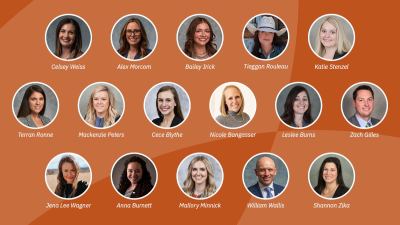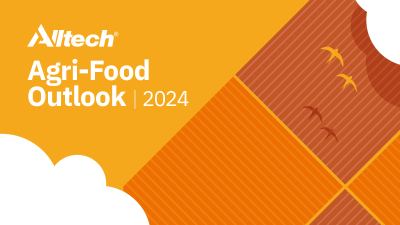Jack Rodenburg: Quiet revolution: How robotics change the dairy dynamic

Technology changes the dynamics of labor efficiency on the dairy.
The following is an edited transcript of Tom Martin's interview with Jack Rodenburg. Click below to listen to the full interview:
Tom: After 34 years in dairy extension, Jack Rodenburg started DairyLogix Consulting, focusing on designing dairy barns for robotic milking, and lectures on robotics and other dairy automation and precision technologies. Jack is a certified CowSignals trainer and has co-authored three books in the popular CowSignals series, entitled Robotic Milking: Building for the Cow and Feeding Signals, with Dr. Jan Hulsen. He joins us to talk about robotics on the farm. Thanks for being with us, Jack.
Jack: Thank you. Happy to be here.
Tom: It's often assumed that agriculture is averse to innovation and is no place for things like robots and artificial intelligence and such. But isn't it true that agriculture was one of the first major industries to adopt technology as a means of boosting its productivity?
Jack: Oh, absolutely. I think that farmers have always been interested in ways to reduce labor and ways to make them more efficient in terms of data collection and so on.
Tom: Okay. So, coming up to “year now,” what technological developments today would you say are having the biggest impact on dairy farming?
Jack: Well, I think that there's an awful lot happening. In fact, I call it a “quiet revolution” in the kind of technology that farmers are picking up on. What's fairly new is robotics in areas such as milking and feed delivery and, really, every aspect of the dairy farming operation.
Tom: How exactly do robotics replace mechanization?
Jack: Well, in the past, what we have traditionally done is found ways to make the man more productive by putting him on a bigger machine. We've added automation to our milking parlors so that one man can milk 100 cows an hour instead of 60 cows an hour. What robots do is take the man right out of the equation. So that totally changes the dynamics of labor efficiency because, essentially, we end up just requiring people for the management and the decision-making function, because the labor component in something like milking is done entirely by the machine.
Tom: That really addresses a couple of contemporary problems, not only the cost but the availability of labor, correct?
Jack: Yes, I think it's getting harder and harder in every jurisdiction in the developed world to find good, quality labor for a reasonable price. One of the things that robotics does is that it takes away the repetitive work. We still need people, but we probably need people with a higher level of education and a higher skill set, and much fewer of them.
Tom: How do robotics create the capability to manage cows as individuals?
Jack: Well, if we look at something like robotic milking, the cow presents itself for milking one at a time. She gives us the opportunity to feed her specific to her requirements. Because we have her standing in the stall, we can even adjust the way that she's milked in some cases, and we certainly adjust how frequently we allow her to visit that stall and be milked.
We also get all kinds of new data from sensors, some attached right to the cow. For example, the same neck strap that has the device that identifies the cow will also carry a microphone that will measure the sound of her chewing her cud. We get an indication of her individual feed intake, ruminant health and metabolic health every time that device is read.
Tom: I guess, now and then, you get a cow that has a mind of its own and decides it doesn't want to be milked by that robot, but there's virtual fencing to address that. How does that work?
Jack: Well, this is very new and it's still in the research and development phase. People are probably familiar with virtual fencing as a way to keep your dog in the yard. I think we can individualize that and actually mount it on the cow's collar, so that, if this individual cow is due to be milked and she's not going on her own, we can play some music in her ear for a half an hour. If that doesn't give her the right signal, then we may be able to convince her with some negative stimulus, perhaps a very mild electric shock or something along that line.
Now, I think when I say that, people will be concerned about that from a welfare standpoint, but I can assure you, our experience with those things is that the cow gets that shock once and learns very quickly that she's going to go while the music is playing the next time.
Tom: Our cows, do they like jazz, classical, classic-rock? What's their thing?
Jack: I don't think it matters a whole lot. It's probably what the farmer likes — what makes him happy will do for the cows as well.
Tom: What is dynamic software bringing to the dairy farmer's toolbox?
Jack: Well, the dynamic software is really interesting because, generally, up to this point, we have defined the parameters and we have told these computers and robots what to deliver. But when you think about what management is and what our grandfathers used to do in the barn, if this particular cow is eating 15 pounds of grain now and producing 50 pounds of milk, grandpa would wonder: if he gave her 18 pounds of grain, would she produce 60 pounds of milk? He would try that out. If she didn't respond, he'd take her back to where she was, or even maybe take her a little lower than that. We can teach computers to do the exactly same thing, and that is what dynamic application of computer software is; let the computer adjust the parameters to get the best response out of the cow.
Tom: Do robotics help the industry make gains on the matters of environment and animal welfare?
Jack: Well, anything that we do to improve productivity is going to have a positive impact on the environment. If we look at things like manure and methane gas and so on — which we could consider harmful if they end up the in environment in the wrong way, in the wrong place — they are essentially produced on a per- cow basis. If we can increase the productivity of the individual cow by 30 percent, we can decrease the output by the industry of those harmful substances by 30 percent in the process. We'll need fewer cows to produce the same amount of milk.
In terms of the welfare of the animal, absolutely. When we cater to the cow and to her individual needs, we're going to end up with a happier cow. If I look at something like robotic milking, generally, this robot is very close to where the cow is housed or where she lives, so we don't have to walk her a couple of hundred or a thousand yards to a centralized milking parlor. She doesn't have to wait an hour for milking in a big, crowded group; she goes whenever she wants and has the freedom to do what she wants all day long.
Tom: Are there any trends or innovations or emerging technologies that you're keeping an eye on right now?
Jack: Well, there are certainly always new things coming down the pike. I think, in the robotic milking area, one of the things that we have learned is that a big piece of the benefit comes from bringing the milking system to the cow. I can see where our pasture-based dairies, we're going to take milking systems right out to the pasture and save the cow a lot of walking. I think that we can also probably make that technology a little closer to the cow in the barn as well, perhaps by milking her right along the feed fence, where she's eating.
Tom: What advice can you offer farmers who are interested in thinking about the future down the road?
Jack: Well, of course, we never know what the future will bring. I think that, as a starting point, be aware of what's in development now. Be aware of what the leading-edge producers are using now, even in other countries. That's going to help you make the right kind of decision.
In my work in designing barns, I always try to keep everything as flexible and open and changeable as possible. The fewer limitations we have in our systems, the better. Even if a person today wants to build a barn for a milking parlor, I'm going to draw him a barn that has a spot where robots could work very well — and where robotic feeding technology could work very well in the future, should they decide to go in that direction at some point down the road.
Tom: Dairy industry consultant, certified CowSignals trainer and author, Jack Rodenburg. Thanks for being with us, Jack.
Jack: Thank you.
I would like to learn about improving efficiency on my dairy through nutrition.















